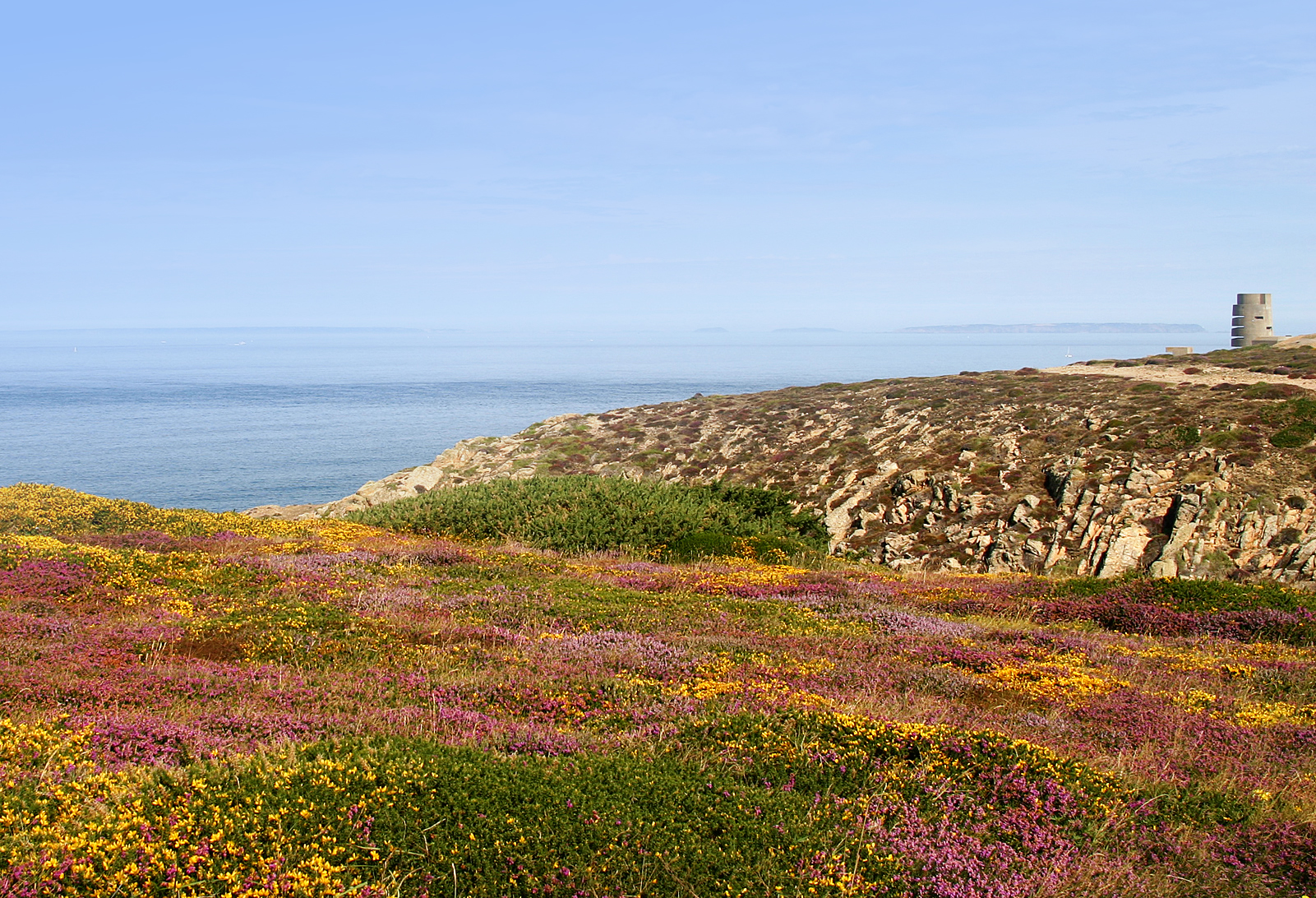A new chough student
Bethea, our chough intern started in February, trained on all things choughs to enable them to service and monitor the Jersey chough population. This gives the rest of the team time to focus their efforts on other important tasks. Our intern has expressed interest in carrying out a research project on the chough population. We hope to gain valuable insights from the research carried out. Research may be on the horizon but there is still plenty of practical work to be done at the aviary. As it has been warming up, the grass has started to grow faster and therefore needs to be regularly cut to provide the choughs with somewhere to forage in the aviary. The team were recently trained in strimming equipment use and can now get to work.
Where have you seen the choughs?
Where have Jersey residents spotted choughs in the past three months? In January, the largest flock sighted was 12, seen beside the pond at Simon and Sands Ltd, St Ouen. Most frequent chough sightings were in St Ouen, mostly groups of two to four. At Crabbe flock sizes were up to six. Plemont saw the usual pair. However, a flock of five has also been seen flying over Plemont. A pair of choughs were also seen flying over aMaizin! Adventure Park and Les Monts Grantez.
February brought us more chough sightings across the island. The most consistent sightings were from Crabbe where flock sizes were seen between two and six, two of which were foraging and identified as Iris & Sercq. The largest flock of 24 was spotted at Grosnez Ravon. A lone chough was heard over Trinity. On one very rainy morning, business owner Jason, at Simon and Sands Ltd, witnessed 12 choughs taking refuge under the eaves of their shed. It’s good to see they know where shelter is when they need it! Another popular place to see choughs is just down the road from Simon and Sands Ltd, at St Ouen’s Pond, where flock sizes of four and up to nine have been seen.
During March, the most frequent flocks were seen in Corbiere, ranging from two to the largest flock of eight. Several sightings over Crabbe, Les Landes, Grantez and St Ouen. Choughs have been seen flying over St Johns Village as well as being spotted foraging in various green lane fields. A pair has been spotted hanging around St Helier.
An exciting adventure
On 31 March, the team were notified of some very exciting news. Two choughs had been seen in Alderney! The last time choughs had been spotted in Alderney was in 1991, almost 35 years ago. The pair were first seen flying from Fort Albert but stopped briefly on the golf course before gaining an unwelcoming reception from the local corvid population. We are hoping that, if the choughs stay on Alderney for a short period of time, will be identified to them at an individual level. So, watch out for the next report to find out who went to Alderney.
Breeding season is upon us
During February, we saw old flames reigniting and even a few new pairs forming. Many of the previous breeding pairs have begun to form closer bonds, spotted sitting close together, engaging in allopreening and flying as pairs. On the other hand, many males and females have been witnessed fighting, likely over potential mates. The team have been monitoring the choughs closely and, from observations, suspect there will be around 17 potential breeding pairs this year. It could be a busy breeding season! It wasn’t long before the choughs were witnessed collecting nesting material too, with the first sighting of this year on 1st March.
Table 1. The seventeen potential breeding pairs.
|
Number |
Breeding Pairs |
|
1 |
Lee & Elm |
|
2 |
Bo & Flieur |
|
3 |
Percy & Remi |
|
4 |
Kevin & Wally |
|
5 |
Trevor & Noirmont |
|
6 |
Dingle & Pyrrho |
|
7 |
Dusty & Archirondel |
|
8 |
Aspen & Jaune |
|
9 |
Sallow & Portelet |
|
10 |
Alder & Wally Jnr |
|
11 |
Minty & Rey |
|
12 |
Pinel & Vicq |
|
13 |
Oronsay & Manitou |
|
14 |
Sercq & Iris |
|
15 |
Sarnia & Pine |
|
16 |
Kent & Rougenez |
|
17 |
Feta & Manchego |

















